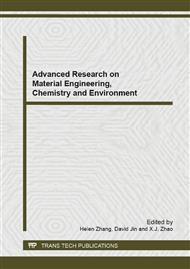p.396
p.400
p.405
p.409
p.413
p.418
p.422
p.428
p.434
Analysis of Axial Local Flux Characteristics in Hollow-Fiber Membrane
Abstract:
Based on the characteristics of non-uniform distribution in the fouling of hollow-fiber membrane, the non-uniform distribution of local flux and redistribution with different fiber length (0.6 m、1.2 m、1.6 m) was investigated experimentally. Experiment was conducted under the condition of operating flux 20 L/m2h (20 LMH). The results indicated that the longer fiber length was, the greater difference in local pressure and the more non-uniform the local flux distributed. Under operating mode of critical flux, the flux distribution in the length of 1.6 m membrane fiber is the most non-uniform with the fastest fouling rate. In addition, the distribution of local flux is more uniform for 0.6 m fiber under the operating flux of 16 LMH, which also slow down membrane fouling significantly. Shorter membrane fiber generally exhibited higher uniformity in the local flux distribution and slower development rate of membrane fouling.
Info:
Periodical:
Pages:
413-417
Citation:
Online since:
September 2013
Authors:
Keywords:
Price:
Сopyright:
© 2013 Trans Tech Publications Ltd. All Rights Reserved
Share:
Citation:



